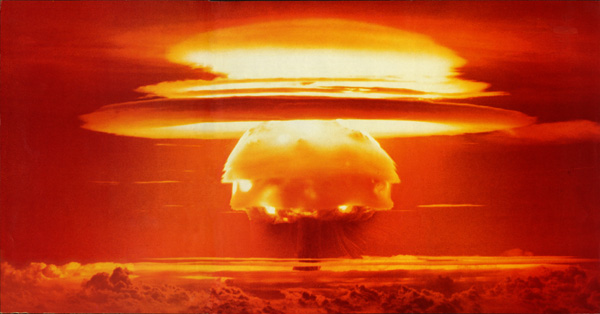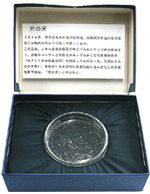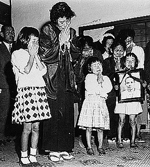 |
|
On March 1, 1954, the Lucky Dragon No. 5, a long-line tuna boat from Shizuoka Prefecture, was exposed to a U.S. hydrogen bomb test. All the crew members were exposed to the "ashes of death," and half a year later, Chief Radio Operator Aikichi Kuboyama died. The Special Exhibition introduces the damage that radiation inflicted on the Lucky Dragon No. 5 and the Marshall Islanders, as well as the suffering caused by the radiation released by the Hiroshima atomic bombing.
|
||||||||||||
 1/The explosion of Bravo, an American hydrogen bomb test. |
||||||||||||
| Encounter with a hydrogen bomb test | ||||||||||||
At 6:45 a.m. on March 1, 1954, the crew of the Lucky Dragon No. 5, an ocean-going long-line tuna boat, saw the western sky suddenly light up with a fireball. The fireball was the explosion of Bravo, the largest hydrogen bomb tested by the United States at the Bikini Atoll. Two or three hours later, highly radioactive ash began falling on the boat. It stuck to the bodies of the crew and they breathed it in through their noses and mouths. These "ashes of death" caused various symptoms in the crew: headache, vomiting, eye pain, bleeding from the gums, hair loss, and more. All 23 were victims of acute radiation poisoning.
|
 2/"Ashes of Death" collected from the Fukuryu Maru No. 5 (Lucky Dragon No. 5) 2/"Ashes of Death" collected from the Fukuryu Maru No. 5 (Lucky Dragon No. 5) |
|||||||||||
|
||||||||||||
| Third Radiation Exposure - The Lucky Dragon No. 5 and Hiroshima Encounter with a hydrogen bomb test Lucky Dragon No. 5 "A-bomb tuna" and radioactive rain Hydrogen test and Japanese scientists Voices opposing A- and H- bombs Damage to the Marshall Islands from nuclear tests Preservation of the Lucky Dragon No. 5 and construction of an exhibition hall The Lucky Dragon No. 5 and Hiroshima Conclusion Tokyo Metropolitan Daigo Fukuryu Maru Exhibition Hall Return to TOP |
